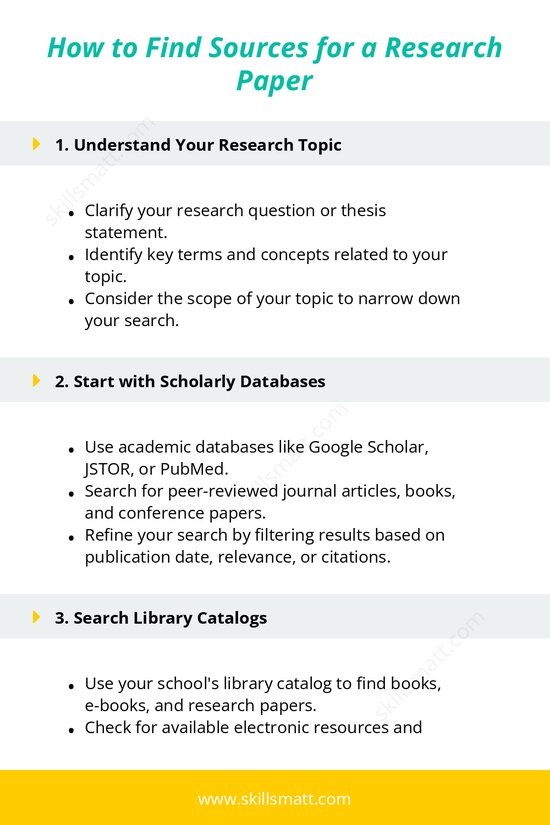How to Find Sources for a Research Paper
1. Understand Your Research Topic
- Start by clarifying your research question or thesis statement to define your focus.
- Identify key terms and concepts related to your topic to guide your search.
- Consider the scope of your topic to ensure your research remains manageable.
2. Start with Scholarly Databases
- Access academic databases such as Google Scholar, JSTOR, or PubMed for high-quality sources.
- Search for peer-reviewed journal articles, books, and conference papers for credible information.
- Refine your search by filtering results based on relevance, publication date, or citations.
3. Search Library Catalogs
- Use your school or public library’s catalog to find books, e-books, and academic papers.
- Check for electronic resources or use interlibrary loan services if needed.
- Seek help from a librarian if you're having difficulty finding relevant materials.
4. Evaluate Source Credibility
- Ensure that the source comes from a reputable author, organization, or publisher.
- Verify that the source has undergone peer review or editorial oversight for reliability.
- Check the publication date to ensure the information is current and relevant to your topic.
5. Explore Primary and Secondary Sources
- Primary Sources: Use original materials like interviews, historical documents, or original research relevant to your topic.
- Secondary Sources: Analyze interpretations or reviews of primary sources such as textbooks, review articles, or documentaries.
6. Use Citation Chaining
- Examine the references or citations in a useful article to discover additional relevant sources.
- Leverage citation management tools like Zotero or EndNote to organize and track your sources.
7. Consider Non-traditional Sources
- For specific topics, explore non-academic sources like government reports, reputable websites, or news articles.
- Assess the credibility of these sources by verifying the author’s credentials and the website’s reliability.


